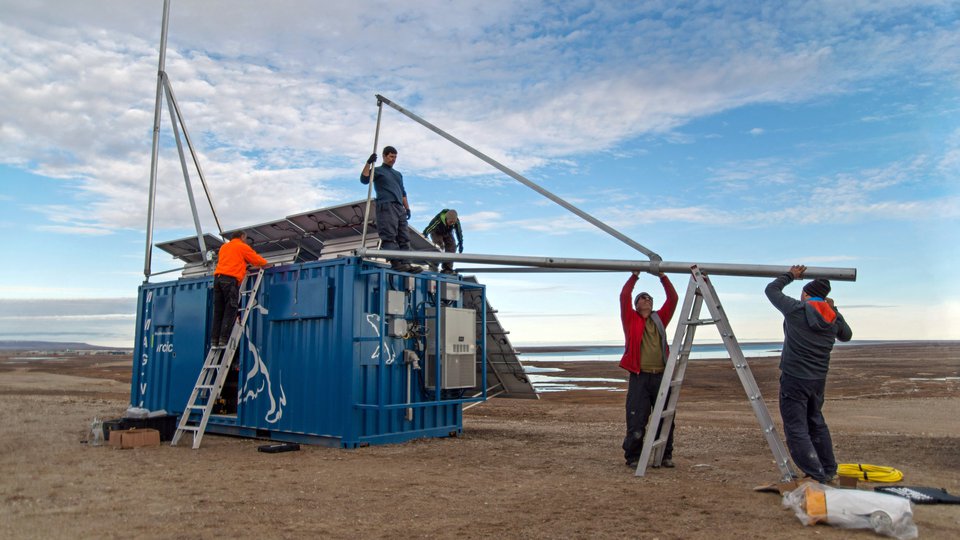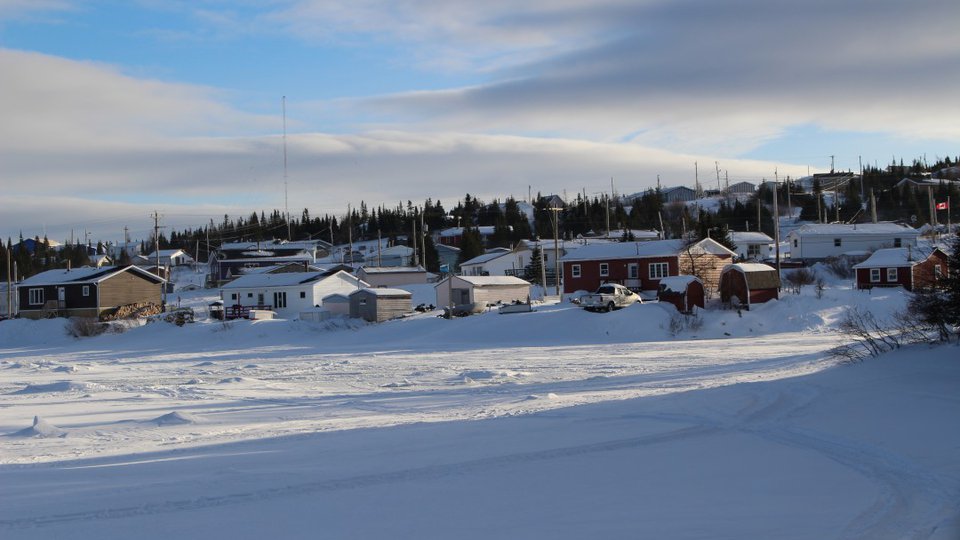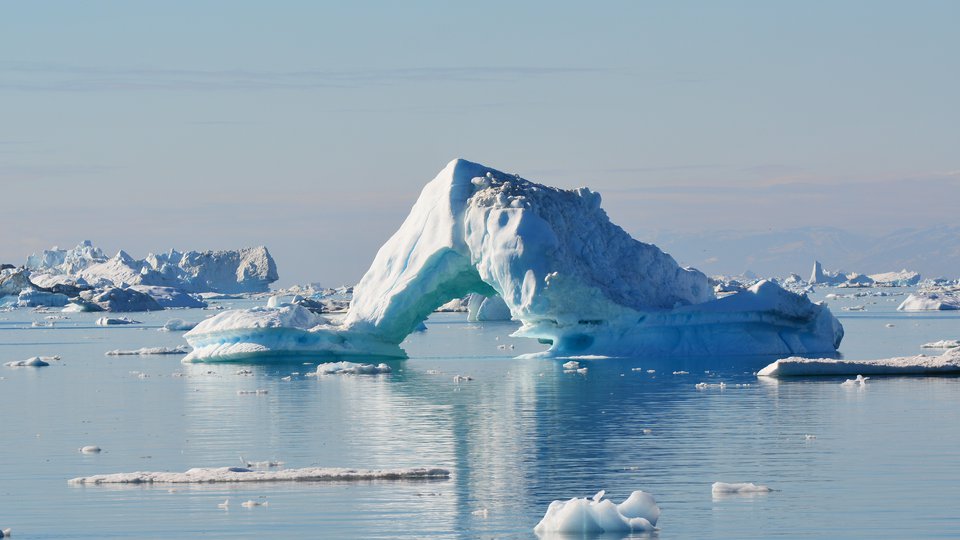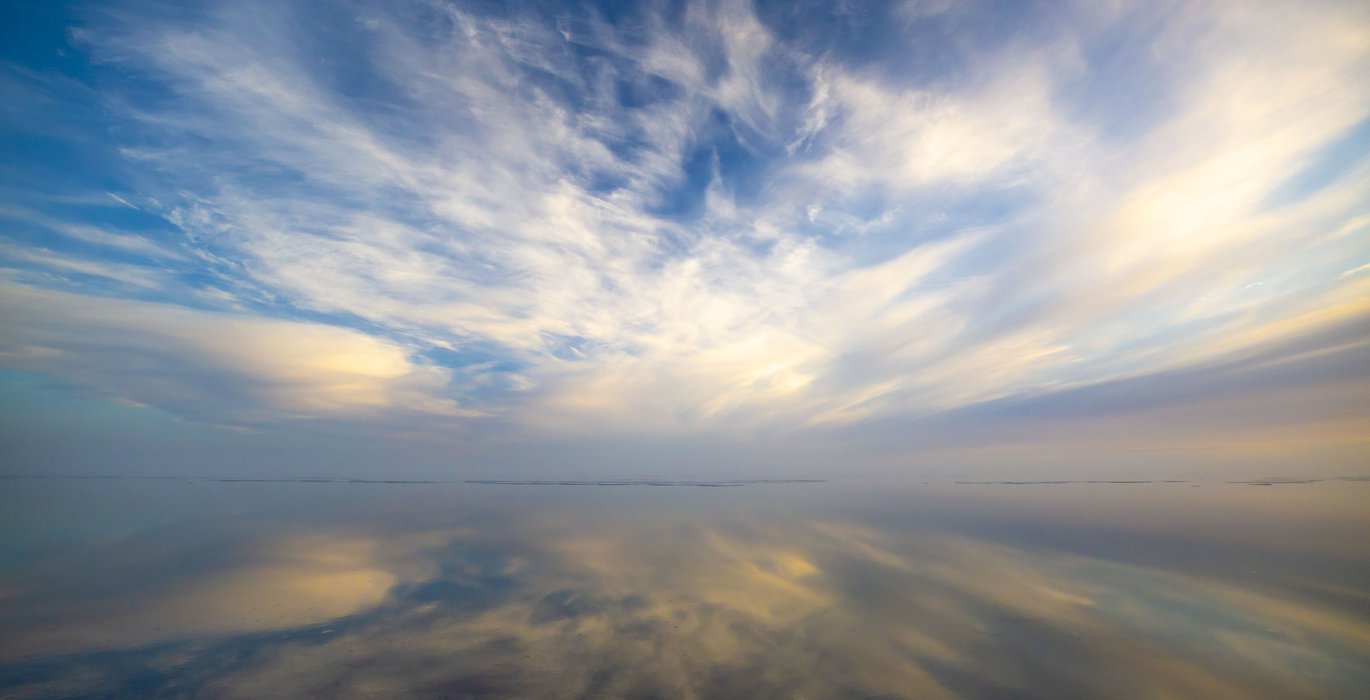
onsider two facts. First, Canada is an Arctic nation. We know that. Second, the Arctic is warming faster than any region on Earth, with sea-ice loss being the leading signal of change. We know that, too. Taken together, these two facts show that the world has been given a time machine, and it is called Canada. An unpredictable, non-linear future has already arrived on our northern shores, and this presents Canada with both a potential crisis and a potential opportunity. As we reflect on the 150th anniversary of Canadian Confederation, it is up to us to select a path to follow. The ways in which we embrace new approaches to turn crisis into opportunity must be shaped by our wisdom as a liberal democratic society and our true—not token—concern for future generations. If we succeed in these experiments, it may influence the world to follow our lead.
Canada, with the world’s longest national coastline, is bordered by three magnificent oceans. Let us focus on just one of those borders and look north to the Arctic Ocean. In doing so, we must look well beyond the limits of our own nation and well back in time beyond the 150 years of our Confederation, to almost two billion years ago, when the drifting slabs of Precambrian rock that would someday be called Canada began to unite. From this broader perspective, we will begin to understand that our large but sparsely populated nation carries a grave human responsibility for leadership. Will we shoot the puck? Or lose our paddle?
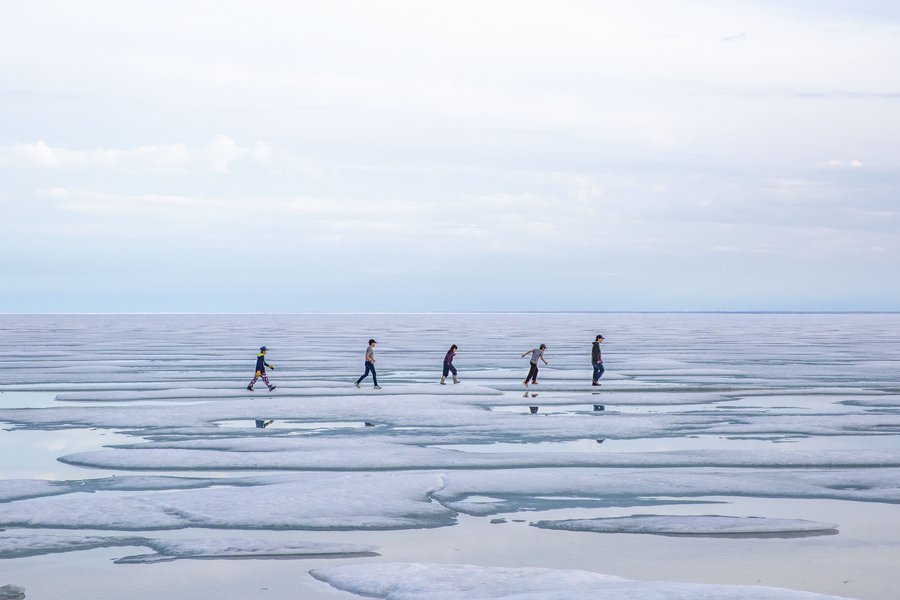
Children walk across summer sea ice in Cambridge Bay, Nunavut. Photo by Zachary Prong.
Let’s start lightly with a few facts about the Arctic Ocean, why it is special, and why it is our urgent responsibility to govern wisely. This tiny ocean holds only 1 percent of the world’s ocean volume and occupies only 3 percent of the world’s ocean surface area, but its impact on the global climate system is disproportionately large. Though small in area, it scoops up over 10 percent of global river runoff and claims twenty of the world’s one hundred longest rivers. The Arctic marine domain comprises about a third of the world’s coastline and one-quarter of the world’s continental shelf, both of immense socio-ecological importance. On all counts, the little Arctic Ocean holds its own on the global stage.
And yet, an economist might point out that the High Arctic is a remote, sparsely populated, and costly playing field, of minor importance to the global economy. Likewise, politicians typically view the small number of voters and move on—there are only 3 (out of 335) seats in the Canadian Parliament from communities above 60 degrees north latitude. So why should we focus any attention on the Arctic at all? First, the potential economic importance of the Arctic is disproportionate; while only 0.05 percent of the world’s population lives north of the Arctic Circle (and only 0.25 percent of Canadians), 15 percent of global petroleum production and around 20 percent of undiscovered of petroleum stores are found in the Arctic. About 10 percent of metal resources and global shipping activity also occurs there. At present, only a small fraction of global ecotourism occurs in the Arctic, but this activity has the potential to rapidly expand, as does the potential for major Arctic fisheries catches. If we choose to use or extract any of these resources, then we must also launch the necessary adaptive management experiments to track the consequences; before, not after. Second, there is mounting scientific evidence for the interconnectedness between the Arctic system, mid-latitude weather, and global climate. Third, ecological and socio-economic systems in the Arctic region are undergoing an observable and southward spreading transformation, and this provides a proverbial “looking glass” into the future.
The fabled Northwest Passage is more than a destination for explorers and commercial ship traffic; it is an oceanographic freight train that ties together and influences all of Canada’s maritime regions, and other aspects of the global climate system.
To understand the future, we must first understand the present. What governs the dynamics of this remarkable little ocean, with its disproportionate global ownership of freshwater, continental shelves, and coastlines? The ultimate driver—which renders the Arctic Ocean far different from its polar opposite in the southern hemisphere—is the global hydrological cycle, which determines the distribution of water around the planet. This driver begins in warmer climes far to the south, with the equatorial trade winds and mid-latitude westerlies. It is refined and shaped by the global distribution of land masses that, in the northern hemisphere, collect precipitation and direct it poleward in massive subarctic rivers, including the mighty Mackenzie, which flows over four thousand kilometres from its headwaters in northeastern British Columbia to the Beaufort Sea. These rivers introduce substantial amounts of fresh water into the upper layers of the Arctic Ocean, providing the required conditions for an ice cover to form, and regulating nutrient supplies and biological productivity. Changes in global temperature, hydrological cycles, and sea-ice cover have all had significant and eminently observable effects on the Arctic Ocean. Over the past two decades alone, summer sea-ice extent in the Arctic Ocean has decreased by over two million square kilometres. This represents a surface area somewhere in between the size of Mexico and Argentina, and larger than all but about a dozen countries in the world.
But the little Arctic Ocean is not just a passive victim of anthropogenic change: it is reaching back to the global system in ways that were overlooked even a decade ago. Though the exact mechanisms are still debated, Arctic sea-ice loss may be affecting both ocean currents and mid-latitude weather patterns along our southern borders. And the processes occurring in the Arctic play a vital role in connecting Canada’s two other coastal regions in the Pacific and the Atlantic. The fabled Northwest Passage is more than a destination for explorers and commercial ship traffic; it is an oceanographic freight train that ties together and influences all of Canada’s maritime regions, and other aspects of the global climate system.
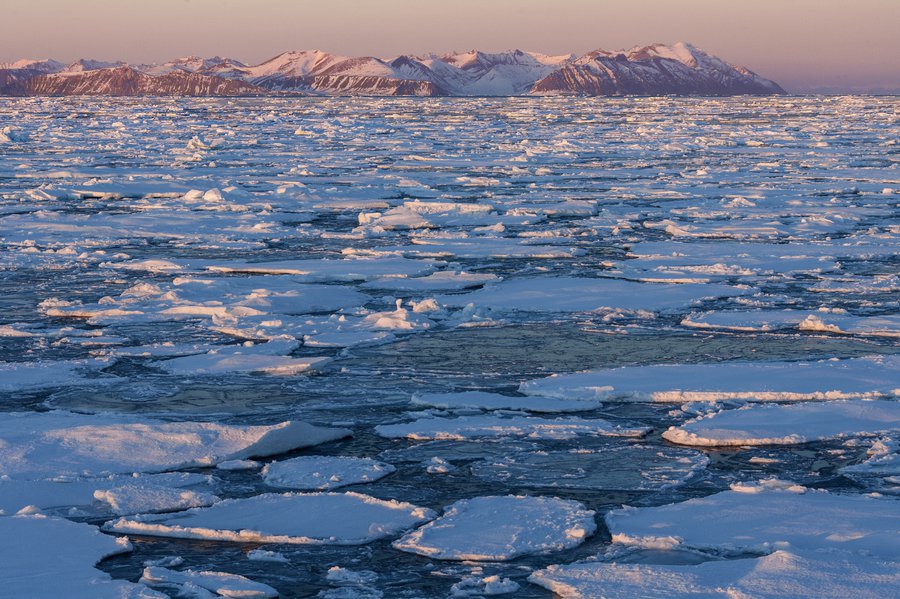
"Arctic sea-ice loss may be affecting both ocean currents and mid-latitude weather patterns along our southern borders."
Observations from the three oceans surrounding Canada during the International Polar Year illustrate the principle of interconnection. Ocean currents link all three of Canada’s oceans, allowing heat, salt, and organisms to flow from one to another, with interconnected consequences. Envision a row of dominoes, each representing a specific component of an intertwined ocean system; changes to one may set off a cascade of falling dominoes with far-reaching “downstream” effects. For example, warming of inflowing Atlantic and Pacific waters may drive sea-ice loss in the Beaufort, which may lead to surface freshening, which may limit the resupply of nutrients to marine plankton, and so on. Each step along the way may have its own set of feedbacks and limits. As individual dominoes begin to lean, they may surpass their own “tipping points” and thus organize in new and sometimes unexpected ways. Some outcomes may be beneficial to existing ecosystems and humans, but others will likely be detrimental. Welcome to the non-linear future!
The past holds clues to what a non-linear future might look like in the Arctic. Geology and climate are impatient with our tiny ocean, as sea-level fluctuations during glacial-interglacial climate cycles have repeatedly exposed and flooded the expansive continental shelves of the Arctic. During the last glacial maximum, about twenty thousand years ago, massive ice sheets covered the northern half of our continent, and the transfer of water from the oceans to continental glaciers exposed the Arctic continental shelf to form the Bering land bridge. This exposed land blocked the flow of low-salinity and nutrient-rich Pacific water into the Arctic Ocean, but allowed animal and human migration and settlement between Eurasia and North America. During the subsequent interglacial warming period, ice sheets melted, sea level rose (sound familiar?), and the Arctic continental shelves were flooded once again. In this manner, the Arctic’s “oceanographic clock” was reset a mere ten thousand years ago, making its current ecosystem a work in progress.
The message in the story of all extinctions is that life is an interconnected system, subject to rapid disruption, and this demands an Earth ecosystem perspective.
We can trace our story even further back across geological time. Scientists now recognize that, over the past 445 million years, there have been five major extinctions and dozens of lesser ones. Each of these events was defined by a rapid and worldwide loss of animal species, as was captured in Canada’s vast geological record. Such extinctions are forever. Proposed triggers include massive volcanic events, comets and asteroids striking Earth, and mega-glaciations—the “snowball Earth” scenarios. While such triggers have been identified, they do not work directly; rather, they disrupt system properties essential to life, and when these change, the rules for the game of life change. Despite their various triggers, all extinctions come down to changes in relatively few parameters: temperature, salinity, oxygen, acidity, nutrients, CO2 concentrations, etc.—the very same parameters that are currently undergoing significant perturbations in the Arctic Ocean and beyond. The message in the story of all extinctions is that life is an interconnected system, subject to rapid disruption, and this demands an Earth ecosystem perspective.
In the Arctic Ocean, big changes in sea-ice cover, freshwater supply, nutrient availability, and underwater light climate are taking place at an accelerated pace, with associated shifts in seawater chemistry and biological activity, and alterations to habitat and food-web structure that are affecting an entire ocean. Ocean waters are growing more acidic, and oxygen concentrations have decreased by nearly 8 percent over the past fifty years alone. Concerns now exist for the catastrophic release of methane, a potent greenhouse gas, from both marine and terrestrial environments. From this perspective, it seems inevitable that the ongoing and rapid changes in the physical environment of the marine Arctic will push existing socio-ecological systems—small and large—beyond tipping points and into new regimes.
Now, more than ever, it is imperative to close the gap between the knowledge of a rapidly changing Arctic and the corresponding development of new ideas and innovative policies to sustain resilience of the Arctic through that change.
To look ahead, Canada must recognize and celebrate its status as an Arctic nation, and think well beyond local problems and self-interests. Even if the world is able to limit anthropogenic warming to 2°C, Arctic amplification will push Arctic temperatures to twice that amount or more. Now, more than ever, it is imperative to close the gap between the knowledge of a rapidly changing Arctic and the corresponding development of new ideas and innovative policies to sustain resilience of the Arctic through that change. We must recognize the capacity of the Arctic system to change, and yet maintain identity in the face of significant disturbance. To do so, we must seek—through observation, modelling, and open debate—the leading indicators of regime change, and then act responsibly to maintain resilience through adaptation-oriented policy. The challenge of turning crisis into opportunity may be better met if we pursue an approach that will allow northern Canadian residents living in small coastal communities to join in observing, adapting, and—if necessary—transforming socio-ecological systems. The work that we do as an Arctic nation will result in ideas that are transferable around the world, so that everyone can benefit from Canada’s clear-eyed assessment of its Arctic time machine.
Eddy Carmack is a Senior Research Scientist Emeritus for the Department of Fisheries and Oceans at the Institute of Ocean Sciences in Sidney, British Columbia. His research involves relationships between oceanography, climate and marine ecosystems. Over his 50 year career he has participated in over 90 field investigations in high-latitude rivers, lakes and seas spanning from the Antarctic to the Arctic and from the Yukon to Siberia. From this he has published over 200 peer-reviewed scientific articles, over 70% of which contain ‘original’ data.
This essay was originally published in Reflections of Canada (2017) by the Peter Wall Institute for Advanced Studies (PWIAS), University of British Columbia, Vancouver, Canada.
